Final Project
As this year I’m taking up the FabAcademy course I decided to keep my first idea (that I had back in 2013) and review it under a new perspective. Since 2013 I learned so many things about digital fabrication and my ideas are somewhat changed. Thereby the device I envisioned is not going to remain but the idea to depict the movement will.
So basically, the main idea for my final project was: “To promote, on a tridimensional form, the movement that our eyes can´t see”.
Back in 2013, the first attempt that I imagined was to build a rotative structure for 3D scanning an object in motion.
The experience showed me that it’s very hard to obtain a 3D volumetry of a model during scanning when the original object is in motion. I once tried rotating the base in order to facilitate the capture and the experience proved me I was wrong. The perfect scenario is when you have reference points alongside the background of the scanned object in order to recreate its volumetry, getting it from the mapping result of the surrounding environment.
By 2013 my aim was to reach a shape that could translate a fraction of a moment of that moving object. I was looking for a new way of looking into an object and seeing it translated as a three-dimensional solid shape.
What gave me encourage to this initial idea for a final project, was my growing interest about the artistic movement called “Futurism” and other artistic movements that gained strength thanks to the arrival of the mechanicism in the field of Arts.
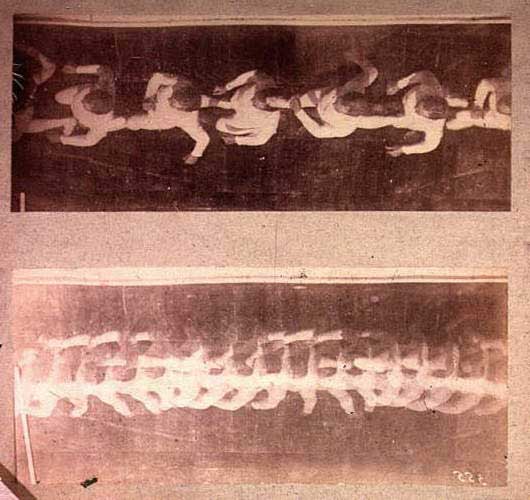
Etienne-Jules Marey (1830 – 1904)
Marey was a physiologist that developed photographic techniques in order to analyze the laws that governed the movements of the body, as comparing it to an animated machine. According to Dagognet, Marey was able to “capture a trace of the usually invisible world of motion, for aesthetics and science”.
Source: Dagognet, François. Etienne-Jules Marey: A Passion for the Trace. Braun, Marta. Picturing Time: The work of Etienne-Jules Marey (1830-1904)
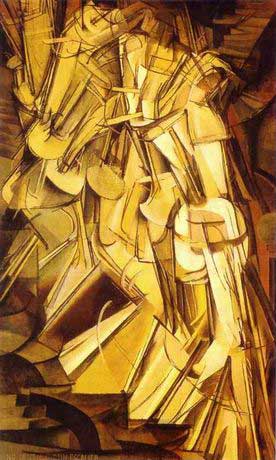
Nu descendant un escalier nº2 (1912)
The dadaist artist Marcel Duchamp (1887-1968) was inspired by the research of Marey when he depict his “Nu descendant un escalier nº2” (1912). In this painting it’s possible to notice a kinetic element by the successive positions of the nude person that is coming down the stairs in a complex rhythm of forms altering morphologically the person’s structure.
Source: Philadelphia Museum of Art
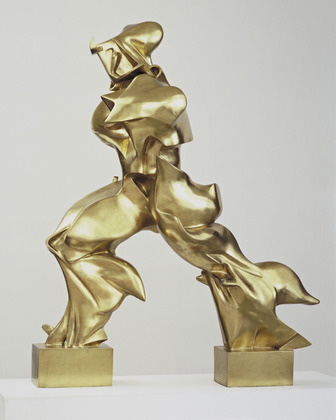
Unique Forms of Continuity in Space, (1913)
Sculpture made by Umberto Boccioni that depicts the movement of a human figure in motion. As a futurist sculpture, this piece is characterized by the movement attempt to portray speed, power, new machines and technologies conveying the dynamism of the modern industrial city.
Project Idea
Since I started working with a team of artists and architects within the environment of a FabLab a lot of new challenges appeared provoking us to access traditional art tools through a digital mean. Different animation tools were also rebuilt in order to facilitate its access to the public visiting our FabLab.
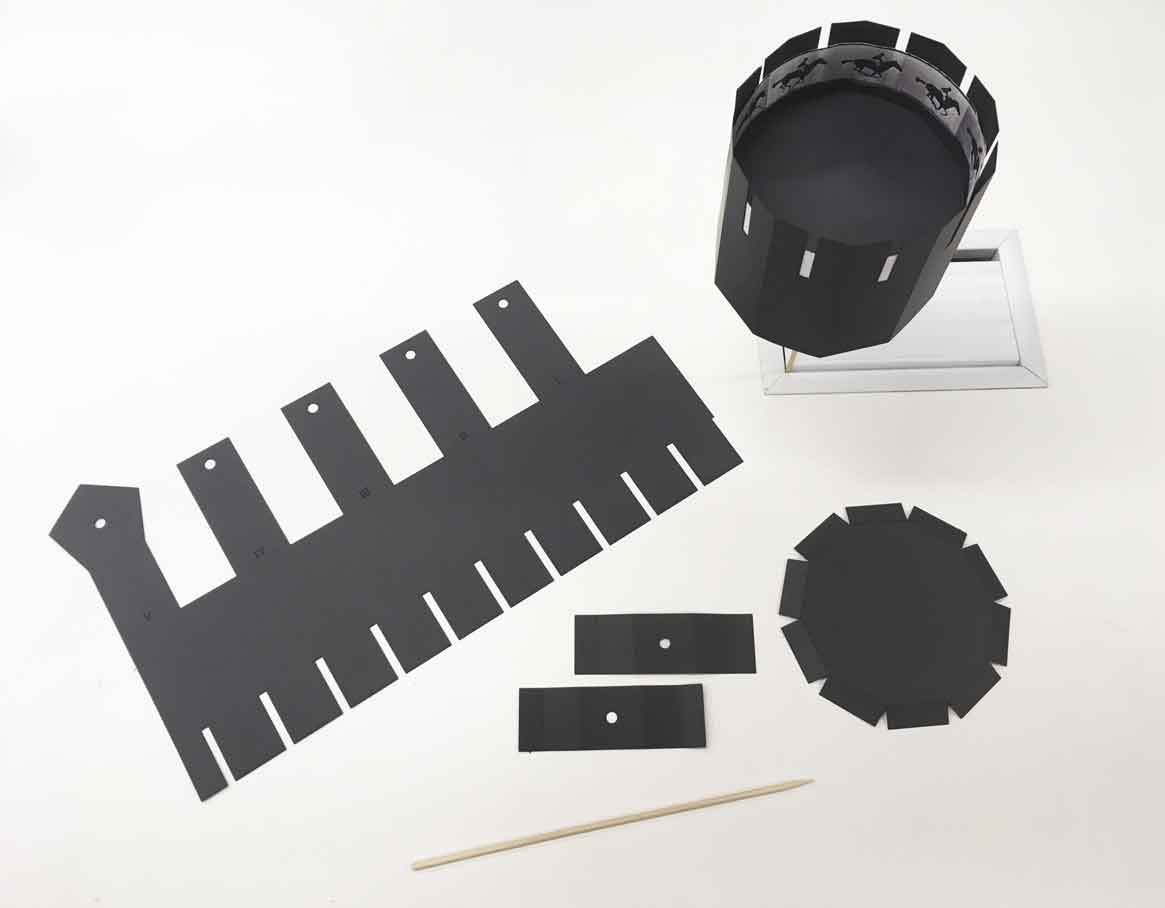
zoetrope from Juliana Henno on Vimeo.
At this point the studies around the Zoetrope caught my attention because it addressed my idea of movement. But looking through the zoetrope perspective the movement of different phases of motion would be translated in a single but animated image.
After a research I found out that there are three different types of zoetropes, the traditional “cylindrical” and also the “linear” and “3D”.
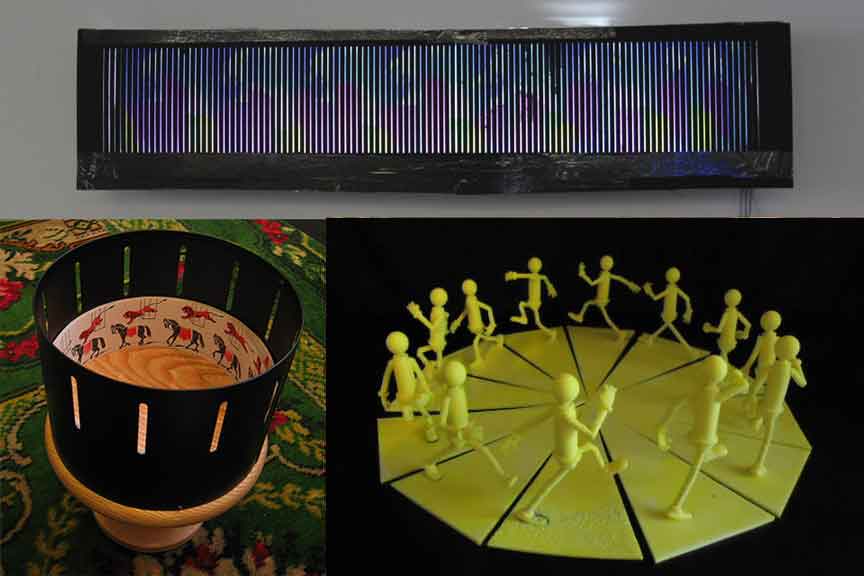
As my interest was and continue to be the tridimensional shape, I decided to stick to the 3D Zoetrope and create some interesting ways of accessing it. I’m well aware that the principles of the zoetrope are simple and straightforward but it’s a line of approach that I want to follow. I intend to have the 3D Zoetrope as a starting point and depart from it to some adaptation to be made by the end of this course.
Overview about the 3D Zoetropes
The word zoetrope stands for “wheel of life” being “zoe” from the greek “life” and “tropos” also from the greek “turning”. The 3D variation of the zoetrope was suggested by Étienne-Jules Marey, the same photographer I was researching while thinking about my final project in 2013. This version designed by Marey in 1887 animated a series of plaster model based on his chronophotographs.
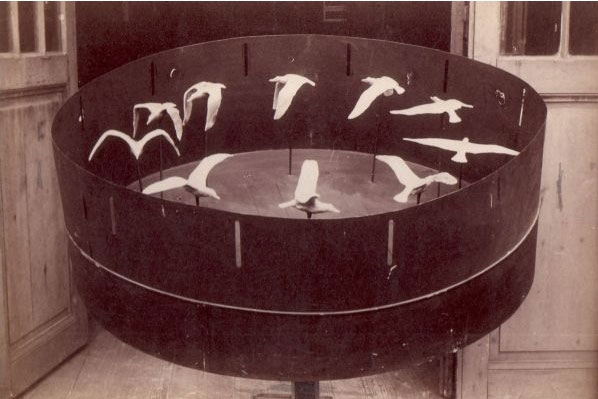
There are some variations for the 3D Zoetrope that dispense the slitted wall around it and instead use a strobe light that illuminate the object at precise times. The base must be always rotating but in a predetermined velocity in order to fool our eyes that the object is really moving.
After a quick research I found some great artworks based on the same principle of the 3D Zoetrope:
Akinori Goto
In his artwork the union of several 2D shapes generates a beautiful 3D shape that, when video mapped in specific places, gives us the impression of a bidimensional figure moving alongside the zoetrope base
Mat Collishaw
In this fantastic 3D Zoetrope, our eyes are syncronized with the light and movement so we have the impression that we see the animated characters without any interruption.
The task for this final project will be on how to create a different approach to the 3D Zootrope in order to facilitate its use by FabLab visitors, teaching important concepts and principles of animation.
I consider that my intentions may be high for the time being, but I really hope that by the end of this course I may reach somewhere near to this goal!